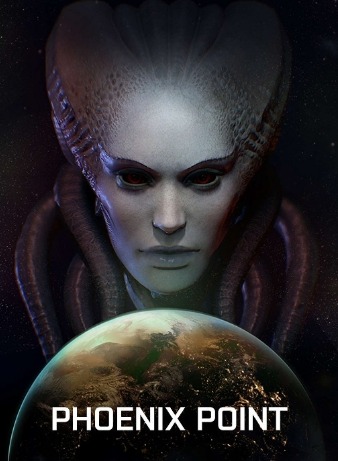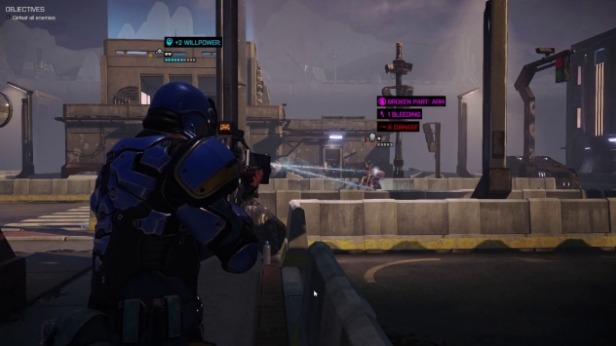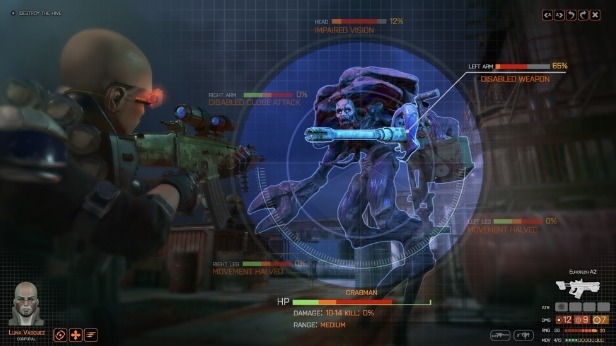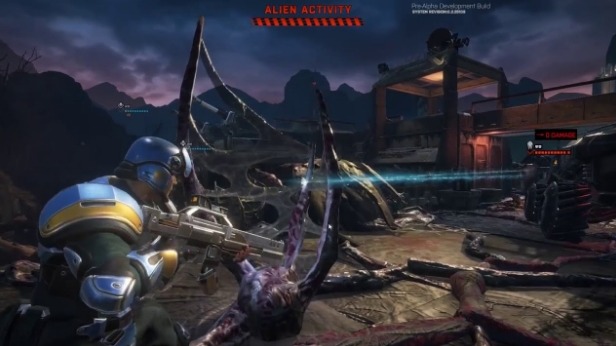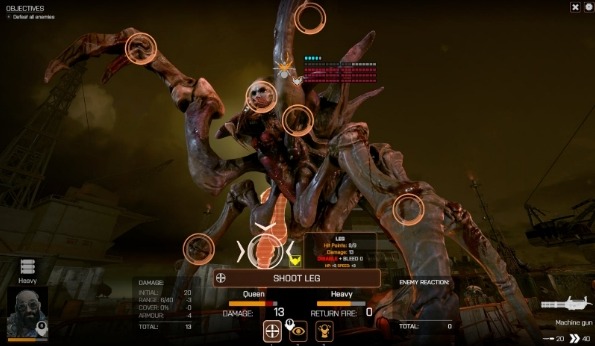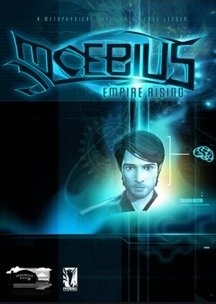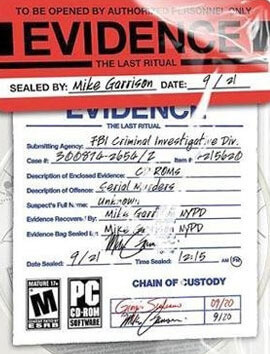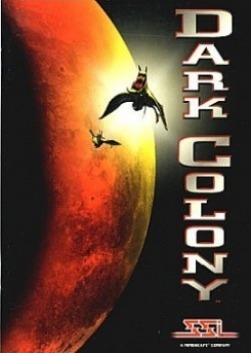In Phoenix Point, the alien threat evolves as part of a gameplay system designed to generate a wide variety of challenges and surprises for players in tactical combat. Aliens encountered by players will be procedurally generated on two basic levels: first, aliens will draw upon a pool of available, interchangeable body parts; second, aliens can change in size and shape. When the Pandoravirus encroaches on new regions, animals and other biological material found, including humans, will be recombined to increase the pool of available body parts for the creation of new aliens, through mutations. For example, in Africa, the procedural generation mutation system might mash-up the body of a lion with body parts of humans and other animals to create alien monsters that resemble a Sphinx.
When aliens are victorious in combat, they may mutate more in order to use captured weapons and other technology. In contrast, aliens that are consistently defeated will continue to mutate in a natural selection process which mimics evolution. For example, a mutation might generate aliens with a new melee attack ability or a new defensive counter to certain types of weapons used by the players' soldiers. These mutations are somewhat random; however, the game's AI is working in the background to find mutations that can defeat players' soldiers by discarding iterations that are unsuccessful. Aliens will continue to evolve until they develop a mutation that allows them to prevail in battle. Aliens with successful mutations then will be deployed in increasing numbers. Thus, the Pandoravirus will respond and adapt to the tactics and technology used by players.
Competing factions
While players contend with the alien threat, there will be AI-controlled human factions in Phoenix Point that interact with the game's world much like players. The Disciples of Anu, New Jericho, and Synedrion with their conflicting ideologies are the major non-player factions in the game. These factions control most of the world's remaining resources. There are also independent havens who the major factions will try to recruit, and their isolated survivors that still can be found scavenging outside of havens.
The three major factions have unique technologies, traits, and diplomatic relations with each other. They have short-term and long-term goals consistent with their ideologies, and they act to accomplish these goals. For example, the factions will be working to expand and develop their havens while players do the same. Players can obtain unique technology from the other factions through conquest or trade. Each of the three major factions also have secrets that can help resolve the alien threat.
The major factions thus offer three different ways that players can end the game. Players can ally with only one of the major factions. Therefore, players will not be able to get all technologies and secrets from all of the non-player factions in the same playthrough. Players will have to choose one narrative path of the game that forsakes other options. This means that players will not be able to obtain access to all of the ways to defeat the aliens in a single campaign.
Global strategy
The world for each Phoenix Point campaign will populate by means of procedural generation. Just to survive, players will need to locate and acquire scarce resources and make smart strategic choices in how they obtain and use the resources. Players will not have a global reach initially, so they will have to expand thoughtfully. How players acquire resources can have dynamic ramifications for their relations with non-player human factions. Players can engage in open hostilities with other havens by either raiding them for resources or conquering their bases.
Players can exploit the conflicts of other factions through kidnappings, sabotage, assassinations, and military coups. Players also can pursue more diplomatic options such as mediating conflicts between factions, defending havens from attacks of aliens or rival factions, forming alliances, or trading. Resource scarcity compels players to deal with non-player factions one way or another, or else the factions will deal with the players. How players choose to interact with other factions will determine substantially the narrative that players experience in their gameplay. Meanwhile, non-player factions will fight or ally with each other regardless of what players do. Players will interact with non-player factions much like in a 4X video game from the Civilization series.
In making strategic choices, players will use a globe-shaped strategic user interface called a Geoscape. The Geoscape is a more complex version of the strategic user interfaces used in previous X-COM games. The Geoscape serves as the nexus for players to monitor their exploration and make choices concerning strategic operations, development, and relationships with other human factions. Players will use the Geoscape to track the spread of the Pandoravirus mist, which will correlate with alien activity. Players also will use the Geoscape to deploy squads of soldiers on tactical combat missions to different locales spread around the world. For example, mission locations could be havens of other factions, scavenging sites at abandoned military or civilian infrastructure, alien encampments, players' bases, and other Phoenix Project facilities. Players will even have missions where soldiers must venture on to the backs of city-sized alien land walkers while the mammoth monsters are moving and trying to rid themselves of the players' soldiers.
